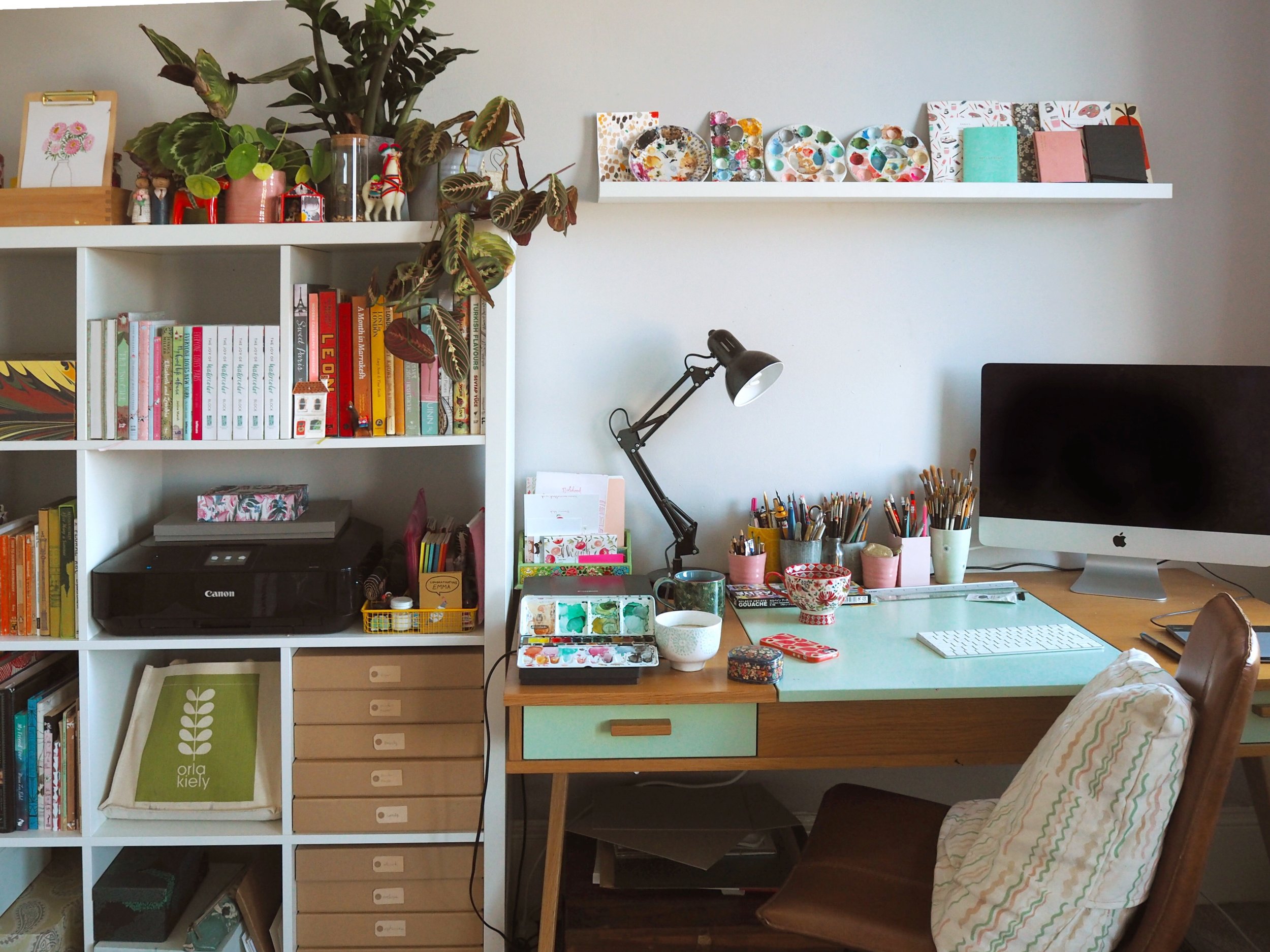Fear of the Blank Page
I don’t personally like the phrase ‘creative block’, but fear of the blank page is definitely real! As an artist and an art teacher I have learnt there are so many things that can hold people back from be creative. Having no ideas, having too many ideas, perfectionism and worrying the painting will be a failure, worrying about wasting expensive materials, and good old fear of the blank page. As a professional illustrator I’m used to painting a lot, but I recently took a break due to travelling and moving house, and I was shocked by how much my confidence had dropped in that time. If I feel nervous about doing a painting after a ten day break, I can only imagine how people feel if they haven’t painted or drawn for years. Here are my top tips for getting over that fear and getting creative again.
Start small
This usually works for me. If you haven’t painted in a long time and you’re feeling anxious the last thing you want to do is start on a huge canvas or an expensive piece of watercolour paper. Even starting a new sketchbook can be scary. Working in a small sketchbook, or on a small piece of paper is a good way to start without worrying about wasting materials or time. Don’t start a huge project, just start something simple you can finish in an afternoon. It doesn’t need to be perfect. It’s just the start.
Keep a list of ideas
I’m sure we all know that feeling, you’ve finally found the perfect time to sit down and do some painting and you can’t think of what to paint. Keep a private Pinterest board or a Instagram collection of images that inspire and write down things that you would like to paint in a notebook. That way it’s there to reference when you’re in the mood to paint.
Make yourself comfy
Again this is one always helps me. Make yourself comfy, make a cup of tea, get your desk arranged nicely, put on your favourite music or podcast in the background and start slowly.
Gather research and reference images
Sitting down and immediately starting to paint puts a lot of pressure on yourself. It’s so much easier when you’ve got a starting point. Try collecting some small objects and drawing from life, or look through photos you’ve recently taken, are there any elements that would translate well to a painting? When I’m out and about and I don’t have time to sketch something I see I often take a quick photo and then paint it later.
Try a workshop
If you’re really feeling lost the guidance of a workshop can really help. The tutor will be on hand to advise and encourage you, and attending a workshop is about giving your self permission to do nothing but learn and be creative for a couple of hours, which is really important. Shameless self promotion, I teach watercolour and gouache workshops regularly in London. Find out more here.
Try a drawing exercise
Sometimes you just need to loosen up and do a few exercises to get used to making marks on the paper. At the beginning of my life drawing classes at university my tutor used to make us draw with our eyes closed, draw with our left hand, draw with a continuous line and draw two minute poses. The point of these exercises is to encourage creativity and get rid of perfectionism. Don’t worry about the end result, just enjoy the experience of mark making.
Follow a tutorial
Following a tutorial is a great way of being creative without having to worry what you’re going to paint. You can find painting tutorials online and in books. Shameless self promotion yet again, my book is full of projects for all skill levels and is a great way of getting back into painting and building up your confidence.







